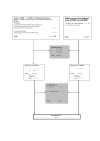Early detection of breast cancer: benefits and risks of supplemental breast ultrasound in asymptomatic women with mammographically dense breast tissue. A systematic review
- PMID: 19765317
- PMCID: PMC2760575
- DOI: 10.1186/1471-2407-9-335
Early detection of breast cancer: benefits and risks of supplemental breast ultrasound in asymptomatic women with mammographically dense breast tissue. A systematic review
Abstract
Background: Mammographic screening alone will miss a certain fraction of malignancies, as evidenced by retrospective reviews of mammograms following a subsequent screening. Mammographic breast density is a marker for increased breast cancer risk and is associated with a higher risk of interval breast cancer, i.e. cancer detected between screening tests. The purpose of this review is to estimate risks and benefits of supplemental breast ultrasound in women with negative mammographic screening with dense breast tissue.
Methods: A systematic search and review of studies involving mammography and breast ultrasound for screening of breast cancer was conducted. The search was performed for the period 1/2000-8/2008 within the data source of PubMed, DARE, and Cochrane databases. Inclusion and exclusion criteria were determined prospectively, and the Oxford evidence classification system for diagnostic studies was used for evidence level. The parameters biopsy rate, positive predictive value (PPV) for biopsy, cancer yield for breast ultrasound alone, and carcinoma detection rate by breast density were extracted or constructed.
Results: The systematic search identified no randomized controlled trials or systematic reviews, six cohort studies of intermediate level of evidence (3b) were found. Only two of the studies included adequate follow-up of subjects with negative or benign findings. Supplemental breast ultrasound after negative mammographic screening permitted diagnosis of primarily invasive carcinomas in 0.32% of women in breast density type categories 2-4 of the American College of Radiology (ACR); mean tumor size for those identified was 9.9 mm, 90% with negative lymph node status. Most detected cancers occurred in mammographically dense breast ACR types 3 and 4. Biopsy rates were in the range 2.3%-4.7%, with PPV of 8.4-13.7% for those biopsied due to positive ultrasound, or about one third of the PPV of biopsies due to mammography.
Limitations: The study populations included wide age ranges, and the application to women age 50-69 years as proposed for mammographic screening could result in less striking benefit. Further validation studies should employ a uniform assessment system such as BI-RADS and report not only PPV, but also negative predictive value, sensitivity and specificity.
Conclusion: Supplemental breast ultrasound in the population of women with mammographically dense breast tissue (ACR 3 and 4) permits detection of small, otherwise occult, breast cancers. Potential adverse impacts for women in this intermediate risk group are associated with an increased biopsy rate.
Figures
References
-
- Bassett L, Kimme-Smith C. Breast sonography. Am J Radiol. 1991;156:449–456. - PubMed
-
- Jackson VP. The role of US in breast imaging. Radiology. 1990;177:305. - PubMed
-
- Parker SH, Jobe WE, Dennis MA, Stavros AT, Johnson KK, Yakes WF, Truell JE, Price JG, Korzt AB, Clark DG. US-guided automated large core breast biopsy. Radiology. 1993;187:507–511. - PubMed
-
- Stavros A, Thickman D, Rapp C, Dennis M, Parker S, Sisney G. Solid breast nodules:use of sonography to distinguish between benign and malignant lesions. Radiology. 1995;196:123–127. - PubMed
-
- Skaane P, Engedal K. Analysis of sonographic features in the differentiation of fibroadenomas and invasive ductal carcinoma. AJR. 1998;170:109–114. - PubMed
Publication types
MeSH terms
LinkOut - more resources
Full Text Sources
Medical


